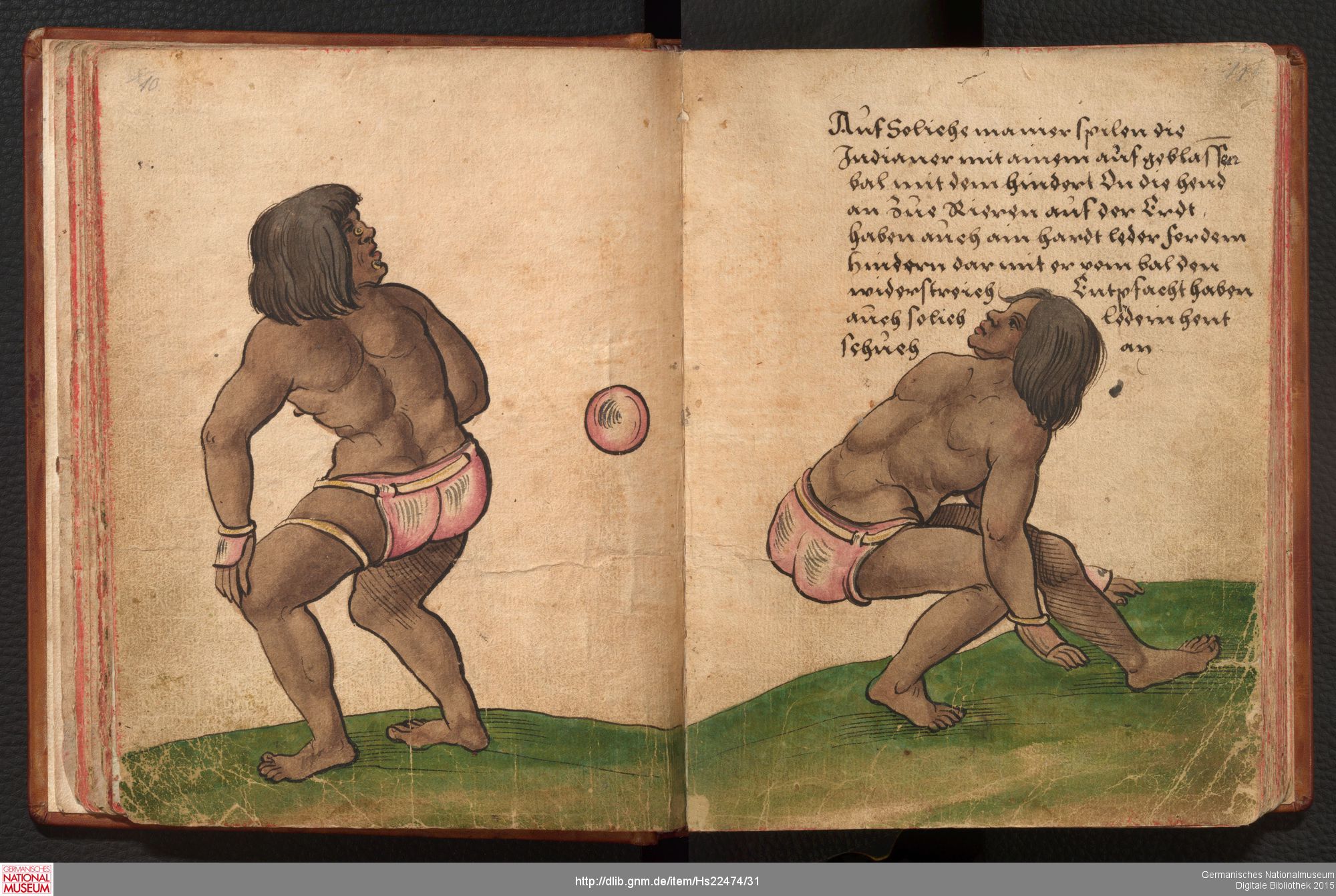Rubber began its bouncing global career in the late 15th century. Among the wonders that Christopher Columbus returned with was a ball of remarkable characteristics apparently obtained in the Antilles. Bartolomé de las Casas wrote that the rubber ball bounced ‘six times more’ than the inflated balls he knew. The Aztec emperor Moctezuma had introduced Hernán Cortés to the rubber ball game, and on his return to the Iberian Peninsula the conqueror presented Tlaxcalan ball players before the court in Barcelona, where Christoph Weiditz depicted two of them lobbing the ball, striking it with their hips. In the wake of conquest and evangelisation, most ball courts were destroyed, being linked to demonic practices, possibly among warriors. The ball game was forbidden, ostensibly to protect players from injury.
The early fascination of the Old World with the Mesoamerican rubber ball was less concerned with the botanical species from which elastic rubber is made than with the products that could be made of it. Although botanical information and practices were recorded in the 16th century, systematic scientific interest in rubber expanded in the 18th century. In South America, the Franco-Hispanic expedition of Charles Marie de La Condamine reported that the Omágua tribe in the Amazon possessed good knowledge of rubber trees and latex. Amazonian samples were sent to the Academy of Sciences in Paris, together with information about the uses of the plants.
Rubber
Emile Carreon and Heloisa Bertol
Further reading
- Carreón, E. (2006) El olli en la plástica mexica: los usos del hule entre los nahuas del siglo XVI (Mexico: UNAM, Instituto de Investigaciones Estéticas).
- Carreón, E. (2013) Le tzompantli et le jeu de balle: relation entre deux espaces sacres (Oxford: BAR).
- La Condamine, C.M. (1981) Voyage sur l’Amazone (Paris: Éditions la Découverte).
- Castro Faria, L. (2001) Um outro olhar: diário da expedição à Serra do Norte (Rio de Janeiro: Ouro Sobre Azul).
- Dean, W. (1987) Brazil and the Struggle for Rubber: A Study in Environmental History (New York, NY: Cambridge University Press).
- Harp, S.L. (2016) A World History of Rubber: Empire, Industry and the Everyday (Oxford: Wiley).
- Huber, J. (1912) Relatório sobre o estado actual da cultura da Hevea brasiliensis nos principais países de producção do Oriente (Belém: Imprensa Official do Estado)
- Minguet, H. (2004) L’Étrange histoire des plantes (Paris: Ed. Plon).
- Spruce, R. (1908) Notes of a Botanist on the Amazon and Andes, 2 vols., edited and condensed by A.R. Wallace (London: Macmillan and Co).
- Stern, T. (1966) The Rubber-Ball Games of the Americas, monographs of the American Ethnological Society (Seattle, WA/London: University of Washington Press).
- Weinstein, B. (1983) The Amazon Rubber Boom, 1850–1920 (Stanford, CA: Stanford University Press).
- Wright, H. (1912) Hevea Brasiliensis or Pará Rubber (London: MacLaren & Sons Ltd).





